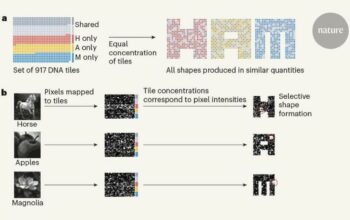Recent advancements in materials science have ushered carbon-doped magnetic semiconductors into the spotlight, marking an intriguing chapter in the interplay between magnetism, conductivity, and the versatile properties of carbon. This innovative foray encompasses a synthesis of magnetism with semiconductor technology, paving the way for a multitude of applications in spintronics, optoelectronics, and quantum computing. The unique, tunable nature of these materials promises to shift perspectives and stimulate curiosity across several fields.
Firstly, it is imperative to understand the structural advantages offered by carbon. As a tetravalent element, carbon possesses a remarkable ability to form covalent bonds, allowing it to replace other atoms in a semiconductor lattice without significantly altering its crystal structure. When doped with carbon, traditional semiconductors such as silicon or gallium arsenide can impart ferromagnetic properties that were previously the realm of magnetic materials. This transition is not merely a supplementary development; it represents a paradigmatic shift in how scientists leverage the fundamental properties of materials.
One of the most discussed implications of carbon-doped magnetic semiconductors is their potential in spintronics—a burgeoning field that exploits intrinsic spin properties of electrons, alongside their charge. Conventional electronics rely predominantly on charge manipulation, leading to a paradigm that dissipates energy and limits efficiency. In contrast, spintronic devices aim to revolutionize information processing and storage by incorporating electron spin as an additional parameter. The integration of carbon-doping facilitates tunable magnetic properties, allowing for enhanced functionality at reduced energy expenditures.
The synthesis of carbon-doped magnetic semiconductors, while promising, poses several scientific challenges. The precise control of the doping concentration is paramount to attain an optimal balance between magnetic properties and electronic conductivity. Moreover, the thermal stability of these materials must be assessed, especially in applications that might expose them to varying temperatures or environmental conditions. The exploration of different carbon allotropes, such as graphene or carbon nanotubes, also adds an exciting layer to the research landscape, as they exhibit significant electrical conductivity coupled with magnetic behavior. The rationale behind exploring these allotropes lies in their unique electronic band structures and the defects that can catalyze ferromagnetism under specific conditions.
Moreover, the understanding of the ferromagnetic mechanism in these doped systems is an area ripe for exploration. It is essential to distinguish between intrinsic ferromagnetism, arising from the interactions between localized spins due to doping, and extrinsic effects associated with defect states or secondary phases. Advanced spectroscopic and imaging techniques are pivotal in discerning these mechanisms, allowing for a deeper insight into the magnetic interactions at the atomic scale, and providing guidance for engineering these materials for specific applications.
The implications of carbon-doped magnetic semiconductors extend beyond theoretical intrigue. Practical applications in data storage have garnered significant attention. Magnetic semiconductor materials can potentially lead to the development of novel memory devices, such as MRAM (Magnetoresistive Random-Access Memory), which could significantly outperform traditional memory technologies like DRAM. Unlike conventional electronic devices that rely on charge states, MRAM uses magnetic states to store data, offering non-volatility and potentially faster access times. The introduction of carbon-doping could enhance the scalability of these memory devices, allowing their integration into smaller and more efficient on-chip solutions.
In the realm of optoelectronics, carbon-doped magnetic semiconductors also promise a paradigm shift. The ability to manipulate light at the nanoscale could lead to breakthroughs in photonic applications like LEDs and laser technologies. The ferromagnetic properties enable spin-dependent phenomena that can be harnessed for advanced optoelectronic devices, such as spin-polarized light sources, which could introduce new strategies for information processing and transmission using optical signals. Furthermore, the combination of magnetism and optical properties promises to facilitate advances in quantum technologies, particularly in the arena of quantum information and cryptography.
This movement towards carbon-doping in magnetic semiconductors invites interdisciplinary collaboration. Physicists, chemists, and materials scientists must converge their expertise to realize the full potential of these materials. Initiatives that foster such collaboration could lead to symbiotic advancements, bridging theoretical studies with practical applications across several technology sectors. Institutions and research laboratories must prioritize investment in this nexus of magnetic and electronic materials, as breakthroughs in this area could herald a new technological era.
In conclusion, the advent of carbon-doped magnetic semiconductors has opened a vast frontier of opportunity that interlaces fundamental physics with applicable technologies. As researchers navigate the complexities of synthesis, characterization, and application, they stand on the precipice of redefining our understanding of material properties. The meticulous interplay of magnetic and electronic phenomena portrayed in this class of materials beckons further investigation, with the promise of ushering in transformative advancements in electronics, storage, and emergent technologies. The journey to unlock the full potential of these intriguing hybrids is compelling and ranks among the most fascinating exploits in contemporary materials science.












